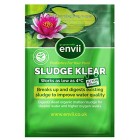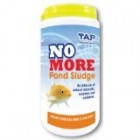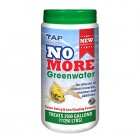Shopping Cart
0 item(s) - £0.00- Accessories
- Aeration & Air Pumps
- Algae Control
- Aquatic Plants, Floating Islands & Pond Planters
- Assorted Water Treatments
- Bacteria
- Barley Straw
- Birding, Bird Baths, Feeders & Bird Watching
- Blanket Weed & Algae Control
- Books & Pond Guides
- Complete Pond Kits
- Diffusers & Airstones
- Dyes & Colorants
- Filters, UV Clarifiers & Skimmers
- Fish Care
- Fountains
- Lighting
- Liner, Membranes & Pre-Formed Ponds
- Muck & Sludge Removal
- Natural Earth Ponds & Lakes
- Predator Control
- Pumps
- Replacement Parts
- Solar & DC Ponds & Pumps
- Spillways & Waterfall Weirs
- Spitters
- Tubing & Hoses
- Winterizing
- Commercial & Industrial UK
- Shop by Manufacturer
Algae Control

Algae often takes the appearance of increasingly thick green foam as the season progresses, the colony of filamentous algae usually extends to the surface of the water, but it can also be spread from the bottom on a thicker gelitonous strand. The damage that these microscopic algae give rise are most often momentary, but in some cases may prove to be irreparable. they can be several causes: shading of the water plan, runoff from fields, bird droppings, excessive feeding, plant fertilizer. Algae usually follows standard appearances and generalized symptoms and causes are to blame.

1 - Forming thick mats on the surface, filamentous algae prevent sub aquatic vegetation to benefit from UV provided by the Sun, and therefore to develop. This is detrimental to many species, including animals.
2 - Eutrophication: If these algae appear frequently in a eutrophied (lacking in oxygen) environment, they produce yet large, excessive amounts during the day. Paradoxically, these releases can be very harmful to the denitrifying bacteria, intensive in nitrate, and in fact, tends to medium-term water oxygen, developing outrageously at the expense of other plants that might compete with them and wildlife in general.
3 - Nuisance Wildlife: many invertebrates and young fish and frogs may find themselves trapped in their filaments and y die. In addition, harming many animal and plant species they agravent the impoverishment of the midges, depriving wildlife of food resources and spawning grounds or interesting nurseries. A low density of these algae however offers shelter to micro-organisms, but the benefit is lost as soon as they condense, stifling even the development of plankton.
4 - Aesthetic Degradation: the thick layer of green algae floating on a body of water is particularly ugly and embarrassing the ornamental varieties planted, they do not allow them to give the best of themselves.
Atlantic Pond Supply UK - Serving the UK Since 2004
UK Pond Supply in Great Britain, Scotland, Wales & Ireland

Pond Supplies in England serving:
Avon – Bedfordshire – Berkshire – Bristol – Buckinghamshire – Cambridgeshire – Cambridgeshire and Isle of Ely – Cheshire – Cleveland – Cornwall – Cumberland – Cumbria – Derbyshire – Devon – Dorset – Durham – East Suffolk – East Sussex – Essex – Gloucestershire – Greater London – Greater Manchester – Hampshire – Hereford and Worcester – Herefordshire – Hertfordshire – Humberside – Huntingdon and Peterborough – Huntingdonshire – Isle of Ely – Isle of Wight – Kent – Lancashire – Leicestershire – Lincolnshire – London – Merseyside – Middlesex – Norfolk – Northamptonshire – Northumberland – North Humberside – North Yorkshire – Nottinghamshire – Oxfordshire – Soke of Peterborough – Rutland – Shropshire – Somerset – South Humberside – South Yorkshire – Staffordshire – Suffolk – Surrey – Sussex – Tyne and Wear – Warwickshire – West Midlands – Westmorland – West Suffolk – West Sussex – West Yorkshire – Wiltshire – Worcestershire – Yorkshire
Pond supplies in Ireland serving:
Antrim – Armagh – Belfast – Down – Fermanagh – Londonderry – Tyrone
Pond Supplies in Scotland serving:
Aberdeen – Aberdeenshire – Angus – Argyll – Ayrshire – Banffshire – Berwickshire – Bute – Caithness – Clackmannanshire – Cromartyshire – Dumfriesshire – Dunbartonshire – Dundee – East Lothian – Edinburgh – Fife – Glasgow – Inverness-shire – Kincardineshire – Kinross-shire – Kirkcudbrightshire – Lanarkshire – Midlothian – Moray – Nairnshire – Orkney – Peeblesshire – Perthshire – Renfrewshire – Ross and Cromarty – Ross-shire – Roxburghshire – Selkirkshire – Shetland – Stirlingshire – Sutherland – West Lothian – Wigtownshire – Wales
Pond Supplies in Wales serving:
Anglesey – Brecknockshire – Caernarfonshire – Cardiganshire – Carmarthenshire – Clwyd – Denbighshire – Dyfed – Flintshire – Glamorgan – Gwent – Gwynedd – Merionethshire – Mid Glamorgan – Monmouthshire – Montgomeryshire – Pembrokeshire – Powys – Radnorshire – South Glamorgan – West Glamorgan

Pond & water garden products in the UK.
Fast and often free shipping across the United Kingdom from Amazon.co.uk fulfillment warehouses.

Atlantic Pond Supply USA | Atlantic Pond Supply CANADA
© 2004 - 2024


































